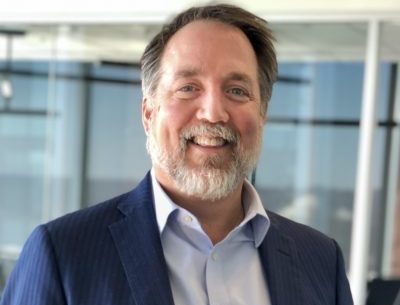Trenor Williams, MD, co-founder and CEO of Socially Determined, is resolute in his quest to inform and inspire executives, policymakers and leaders to make social determinants of health a critical element of their enterprise strategy through data and analytics.
The entrepreneur leads a company solely focused on social determinants and leveraging social risk intelligence to enable more human interactions at the person-level.
Health Evolution interviewed Williams about the driving force behind Socially Determined, the illustrated ROI of social determinants, and the opportunity to coalesce providers, payers, state government and community-based organizations to create a common view of what needs to happen and how to get there.
What was the inspiration or origin story behind the founding of Socially Determined?
Williams: My mom is a social worker. She ran the Area Agency on Aging in in southwestern Virginia for 32 years, which includes senior programs such as Meals on Wheels. Six years ago, I was with her while my dad had cardiac issues and we had a lot of conversations about how her social workers conduct in-person interviews for eligible people at their homes. It struck me that the amount of data social workers had compared to a family practice was simply amazing. They could see if the people were socially isolated, what was in the fridge, or how close the nearest grocery store is to them. In this case, Meals on Wheels had such a massive impact.
So that was one piece of the puzzle that got me thinking, and the second was another woman, Theresa Cullen, MD, National CMIO of Veterans Health Administration.
She engaged my last company to look at social risk for veterans because the VA understood homelessness, suicidality and being able to characterize that risk. Her guidance made me think about it from a much more structured point of view.
Based on those two experiences, I started to put together a business case that resulted in three general philosophical statements: 1) Social risk – including food, housing and transportation – all have a dramatic impact on health and health outcomes that has only accelerated in the last few years. 2) The U.S. healthcare system does a poor job gathering these insights in a usable way, so addressing the related challenges in a scalable, sustainable way feels impossible. 3) If we can align financial incentives and identify where social risk is having an impact, we can address inequities and gaps in care.
In a nutshell, there’s a really big problem that no one has solved yet, but it’s possible to align the money in a way that motivates positive change. That’s the business. And frankly, it can also have an incredible impact on individuals, families and communities.
The idea of social determinants has been around for a long time, yet they are often perceived as a soft issue. What are the business implications that are perhaps not as well recognized as they ought to be?
Williams: We see two challenges, and the first is whether or not there is a business case. There is good evidence about the ROI, financial and clinical impact social determinants can have on a health systems or health plan’s bottom line – it just doesn’t get shared enough. For example, Geisinger addressed food insecurity in diabetic populations and saved approximately $26,000 per member. ProMedica’s initiative to provide financial and food clinics has also had a dramatic and measurable impact on patients and members. So there is really good data out there and it’s always great to add to that compendium. We are very fortunate because the fact that we work with systems, plans, government, and others enables us to measure that impact in a comprehensive way as well.
The second challenge is whether any single organization can accomplish this alone, and the answer is easy: no, they can’t. The challenge is that a health system sees somebody as a patient, the health plan sees that same patient as a member, the state government sees them as a citizen, and community organizations see them as recipient or participants. And those are more than just different labels that apply to the same person. It’s representative of how different organizations think about, view and treat the same person.
What are the opportunities within those problems?
Williams: The opportunity is to bring these entities together to create a common view for what risk looks like, and then create a common path to get there. It’s in everyone’s best interest to bring our health systems, health plans, and state governments together to actually measure the impact as well.










